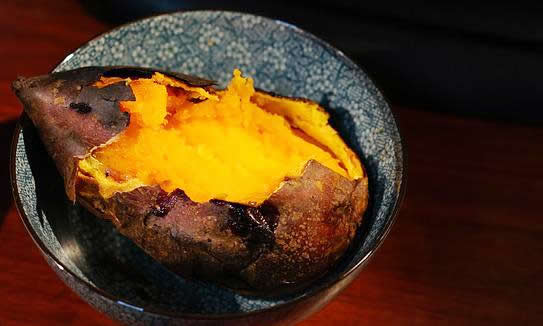先日から「The endurance of Japan’s simple street snack -「生き続ける日本の素朴な屋台菓子」を読んでいます。

・「生き続ける日本の素朴な屋台菓子」(1)
・「生き続ける日本の素朴な屋台菓子」(2)
・「生き続ける日本の素朴な屋台菓子」(3)
Sweet potatoes originated in Central and South America, and scholars have some theories that they came to Japan in approximately the 17th Century.
サツマイモの原産地は中南米で、日本には17世紀ごろに渡来したという説がある。
“The earliest historical reference to sweet potato in Japan seems to be in the diary of Richard Cocks in 1615,”
「日本におけるサツマイモの最古の歴史的記述は、1615年のリチャード・コックスの日記のようです」
said Eric Rath, professor of Japanese history at University of Kansas and author of Japan’s Cuisines: Food, Place and Identity.
と語るのは「Japan’s Cuisines」の著者でカンザス大学日本史教授のエリック・ラス氏。
Cocks, the director of the British East India Company’s outpost in Hirado, wrote that he’d received the potatoes from honorary samurai William Adams, recorded as the first English person in Japan.
平戸にある東インド会社のイギリス商館長であったコックスは、日本で最初のイギリス人として記録されている名誉侍ウィリアム・アダムスから芋を受け取ったと書いている。
Rath said there’s some evidence they might have already been available in the Ryukyu Kingdom (today’s Okinawa) as early as 1605, via the Philippines and then China.
ラスによれば、芋はフィリピン、中国を経由して、1605年にはすでに琉球王国(現在の沖縄)で入手可能だった可能性があるという。
Another account holds that in 1611, Ryukyuan King Sho Nei sent a gift of sweet potatoes to Satsuma Domain, a powerful political entity in southern Kyushu, which had invaded his kingdom and taken over his land
また1611年に琉球王尚寧(しょうねい)が、自国領に侵攻してきた南九州の強国・薩摩藩にその芋を贈ったという説もあり、
- one result of which is that the orange tubers sometimes still bear the name satsuma-imo (potato from Satsuma).
その結果、オレンジ色の塊茎は今も「サツマイモ(薩摩の芋)」と呼ばれることがある。
Regardless of their path to get there, over time, roasted sweet potatoes proved very popular in Japan.
来歴はどうであれ、時と共に焼き芋は日本で大人気となったのである。
侵略され、芋も持っていかれて、琉球は・・・それは今も日本中でサツマイモと呼ばれている。
沖縄のお菓子には紅いも(中が紫色)がよく使われていますが、あれはその仲間なのでしょうね。
焼き芋は寒い季節のおやつですが、芋そのものはゆったりした南国イメージがあります。
肥料要らずで簡単に栽培でき、幾度となく人々を飢えから救ってくれた懐の深い作物、そんなところもどこか南国の印象と重なります。
理由は単純明快!「少ないコストでしっかり楽しく学べるから」。
私自身の経験(高機能でビックリ)をびっしり書いていますので、良かったら読んでみてください。
下のバナーからどうぞ!






